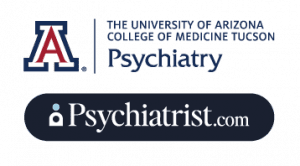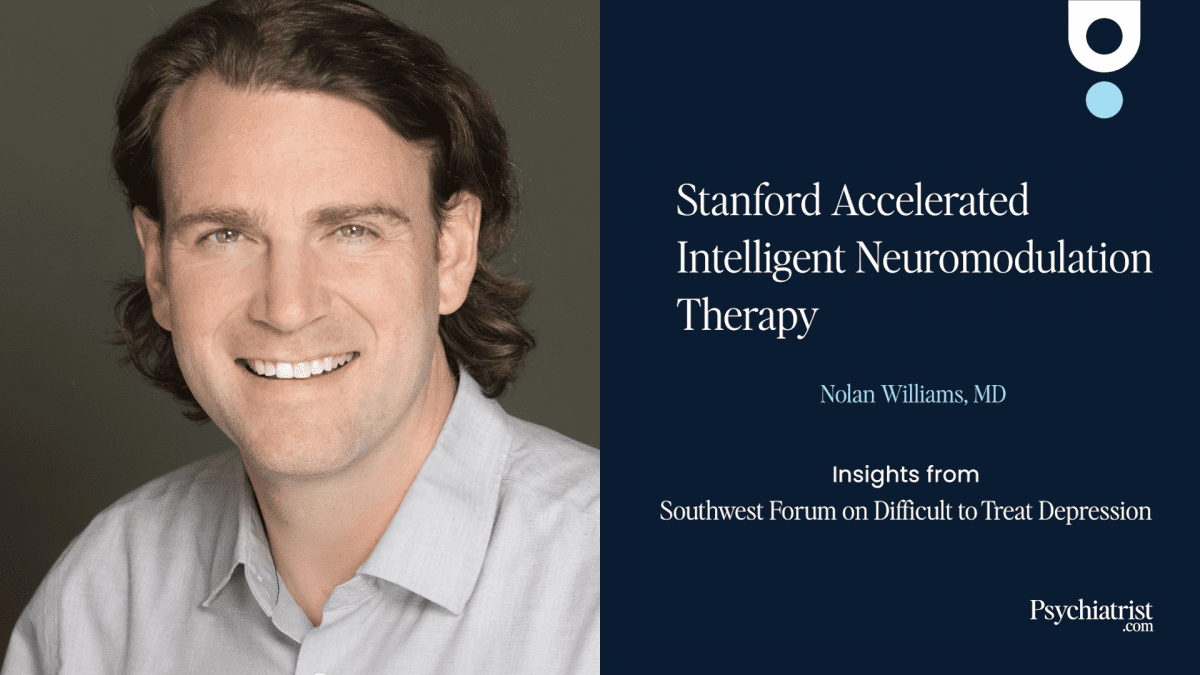Lisa Harding, MD, assistant clinical professor at Yale School of Medicine’s Department of Psychiatry is a board-certified psychiatrist and depression expert trained in providing all treatment types for depression. She’s completed more than 4000 procedures that include administering ECT, rTMS, esketamine and ketamine. Harding is also the medical director of the Mood Institute, a private insurance-based outpatient psychiatric practice dedicated to treatment-resistant depression (TRD), especially in underserved populations.
In her talk, Harding argues that treatment options aren’t the problem. Access is. She also wonders:
- Do people know about these groundbreaking new treatments?
- Does everyone have access to them?
- Are they appropriate – or even affordable?
- And, most importantly, are they effective?
Harding insists that we address – and answer each of these questions.
Lisa M Harding, MD
Assistant Clinical Professor
Yale School of Medicine
Milford, CT
| This presentation was part of the “Southwest Forum on Difficult to Treat Depression: Focus on Approach, Algorithms, and Access” in July at the Arizona Biltmore in Phoenix. Psychiatrist.com worked with the University of Arizona College of Medicine – Tucson Department of Psychiatry.
To learn more and watch more videos, visit our Difficult to Treat Depression Clinical Resource Center. |
 |
|---|
Transcript
[00:12 – 00:44] Importance of Access to Care for Treatment-Resistant Depression
The reason why access to care for treatment-resistant depression is important, it is because we have advanced treatments that really have limited reach right now. And there’s also a dearth of understanding about the clinical efficacy attached to the newer treatments in depression. ECT and TMS have been around for a very long time, and we have newer emerging treatments, and it is important to understand how these new treatments fit into the paradigm of care for treatment-resistant depression.
[00:45 – 01:52] Prevalence and Burden of Treatment-Resistant Depression
When we talk about the prevalence and burden of treatment-resistant depression, we really have to think about the cost that depression really bears on our system. In 2020, the World Health Organization really looked at the depression and realized that it carried the most burden cost-wise for treatment-resistant depression. It actually accounts for 56.6% of the burden of the care that our patients receive. Why is this important? Because our patients need to access care for treatment-resistant depression. The term access to care is used very widely, but few people actually know what it means. Shi and Singh in 2008 actually wrote a paper that makes us think about this definition. The definition is actually adopted by the Affordable Care Act, and it tells us that we have to have a workforce that is very well-trained to provide services, and these services must be affordable and convenient for patients. They must be covered by insurance.
[01:53 – 03:03] Challenges in Providing Timely Care
And these patients must receive this care in a timely manner. With regard to treatment-resistant depression, we have to think about where patients fall in terms of their depression. We often encounter a patient in crisis. When we encounter that patient in crisis, we have where our patients think they are going. Then, of course, we think where that patient is going. And then where that patient actually ends up. When we think about the boarding time in emergency rooms for patients in crisis in psychiatry, we think of that cost burden. We have to get our patients timely care. With regard to treatment-resistant depression, which is a type of major depression, we have transcranial magnetic stimulation, intranasal esketamine, ECT. Racemic ketamine is not approved by the FDA to treat any type of depression. And then we have brexanolone. We have the subtype of major depressive disorder with suicidal ideation. And that is sometimes in the context of treatment-resistant depression. We have ECT and intranasal esketamine that are approved. And we use racemic ketamine off-label.
[03:03 – 04:48] Evaluating Treatment Options and Access to Care
I would like us to think of access to care as a filter, just like I presented before. Let us look at each of these treatments, ECT, TMS, brexanolone, intravenous ketamine, and esketamine, and apply the definition of access to care to each one of these treatments to see if they meet the burden. So we’re going to figure out, is there knowledge of these procedures? Is there equitable access to these procedures? Are these procedures affordable? Is it appropriate for the patient? And does each procedure represent quality health care? This summary table helps us examine this.
[04:48 – 06:48] Assessment of Specific Treatments
So when we think of esketamine, esketamine is FDA approved. It has the approval for psychiatric indications for major depressive disorder, and major depressive disorder with acute suicidal ideation and behavior. Like most drugs in our country, it is very costly. But the cost of delivery in terms of the health care personnel needed is very low. Recently, it was approved in 2019 for MDD or TRD. And to date, most insurances have adopted coverage, including Medicare. There’s a robust safety data set that is provided by the SUSTAIN-3 clinical trial.
Let’s look at racemic ketamine. It has FDA approval, but not in psychiatry. Its use is considered off-label. The cost of the drug is low, but the cost of delivery is high. You have to have somebody to put an intravenous line. You have to monitor the patients. And of course, the added liability of giving a treatment that is off-label. Being off-label, it means that it’s not covered by any insurances. And so patients would have to pay out of pocket for this. There is no robust safety study data. We don’t even have a REMS that tells us how patients are getting care with ketamine.
ECT also is FDA approved for major depressive disorder. In this context, it has other approvals. It’s very costly because there’s an anesthesia cost and monitoring associated with it. And so for that reason, it makes it costly and inaccessible to most patients. And of course, there’s a big stigma attached to ECT. There is robust safety data.
TMS now, it is FDA approved by machine for treatment-resistant depression. And I know there’s a lot of buzz attached to the SAIT protocol that is now emerging. It’s costly. The cost of the machine to the physician is a lot. And the cost of TMS out of pocket to a patient, if it’s not covered, is anywhere between $5,000 and $15,000, depending on the state. So the cost of delivery to the patient, they have to drive themselves 36 times.
So the cost of getting the care, plus or minus. It is covered by most insurances companies because it’s been around for a while. And there is lots of safety data. There’s no drug-drug interaction. Patients can drive themselves to and from treatment, unlike in ECT.
Brexanolone. Brexanolone is approved for postpartum depression. Not really treatment-resistant depression, but it falls into that category. So it’s approved in patients as young as 15 years old for postpartum depression. The drug is costly. The cost of delivery, it is a 60-hour infusion. And it’s not covered by most insurances. But there is a wealth of safety detail.
[06:49 – 08:20] Emerging Treatments and Key Takeaways
I’d like to leave you with the thoughts of what access to care looks like. And I call these the new kids on the block. Psilocybin, MDMA, LSD, DMT, and all of the other novel psychedelic compounds coming on board. When we think about access to care for these new kids on the block, we really have to address the same filter. Is there knowledge of the newer treatments? Is there equitable access to these treatments? Are they affordable? Is it appropriate for the patient? And of course, in my opinion, which I think is the most important, do these newer novel treatments represent quality health care? The key takeaways from this presentation are that we have to identify patients that experience barriers to access to care for depression. We have to develop robust tools to identify who these patients are. And we have to create actionable plans to remove these barriers to care. The care must meet the quality standard of being safe for the patients and must have clinical data to support or use in these patients. Finally, we must consider policy adjustments and advocacy efforts to support these newer models of care.



